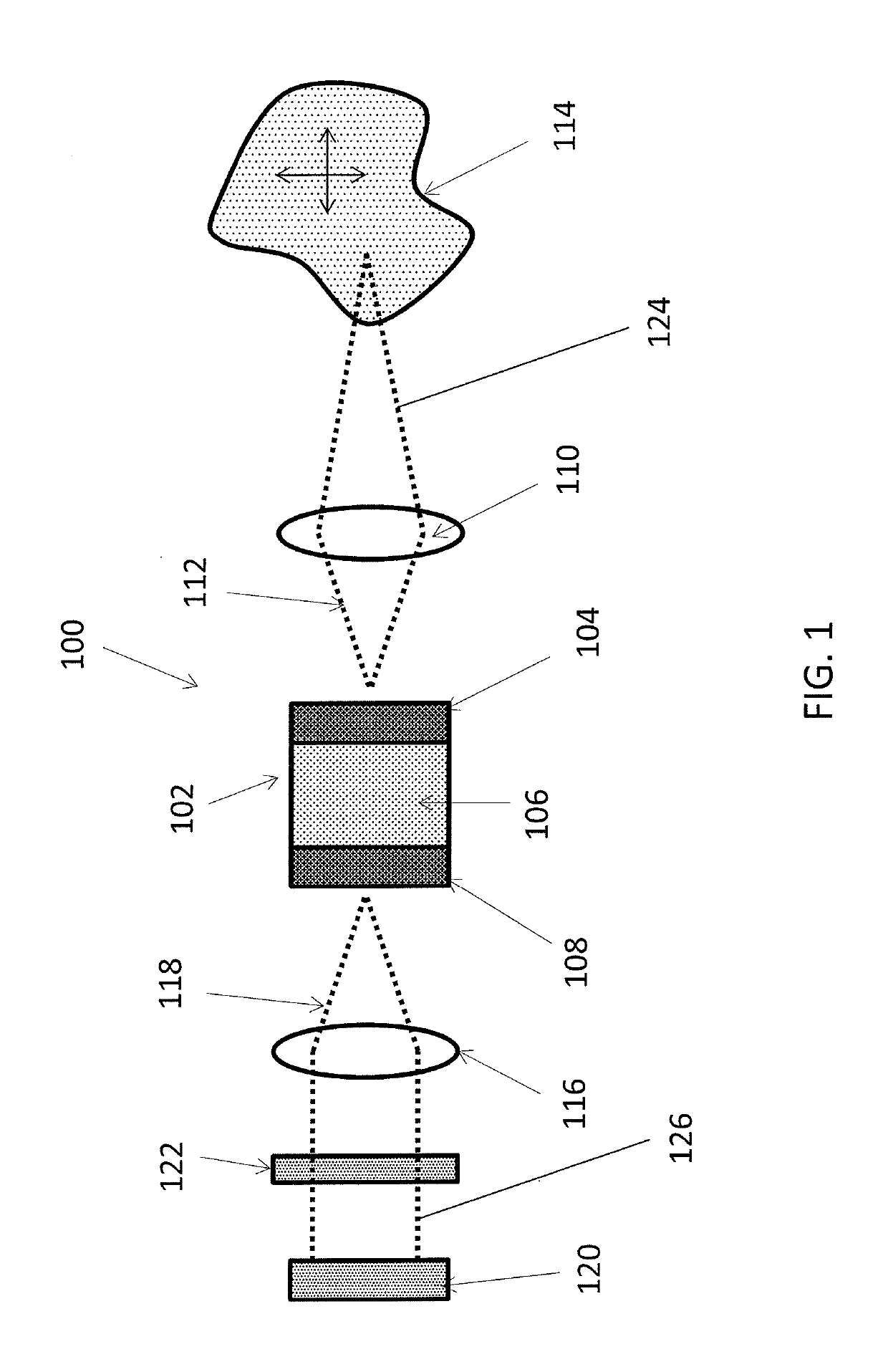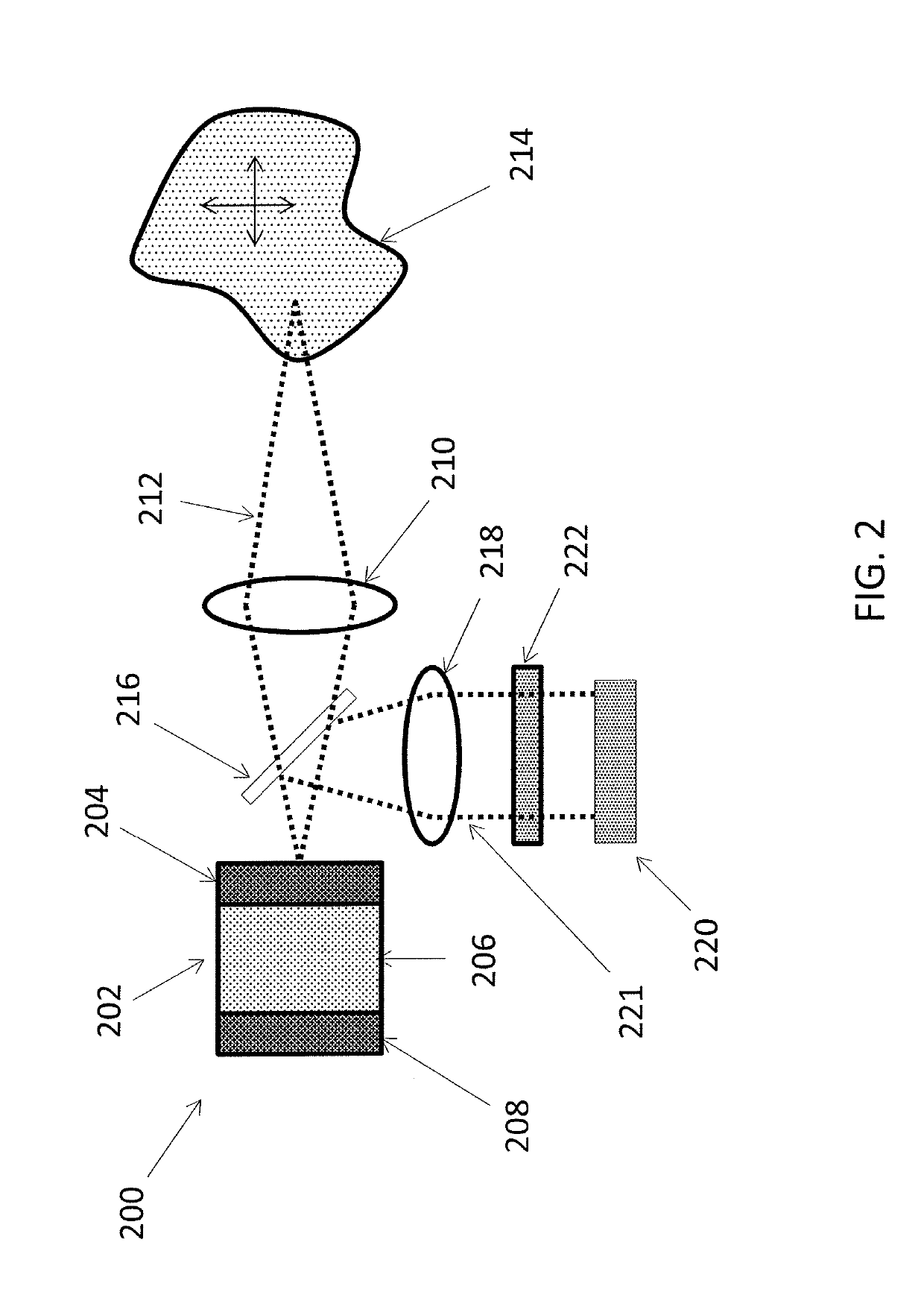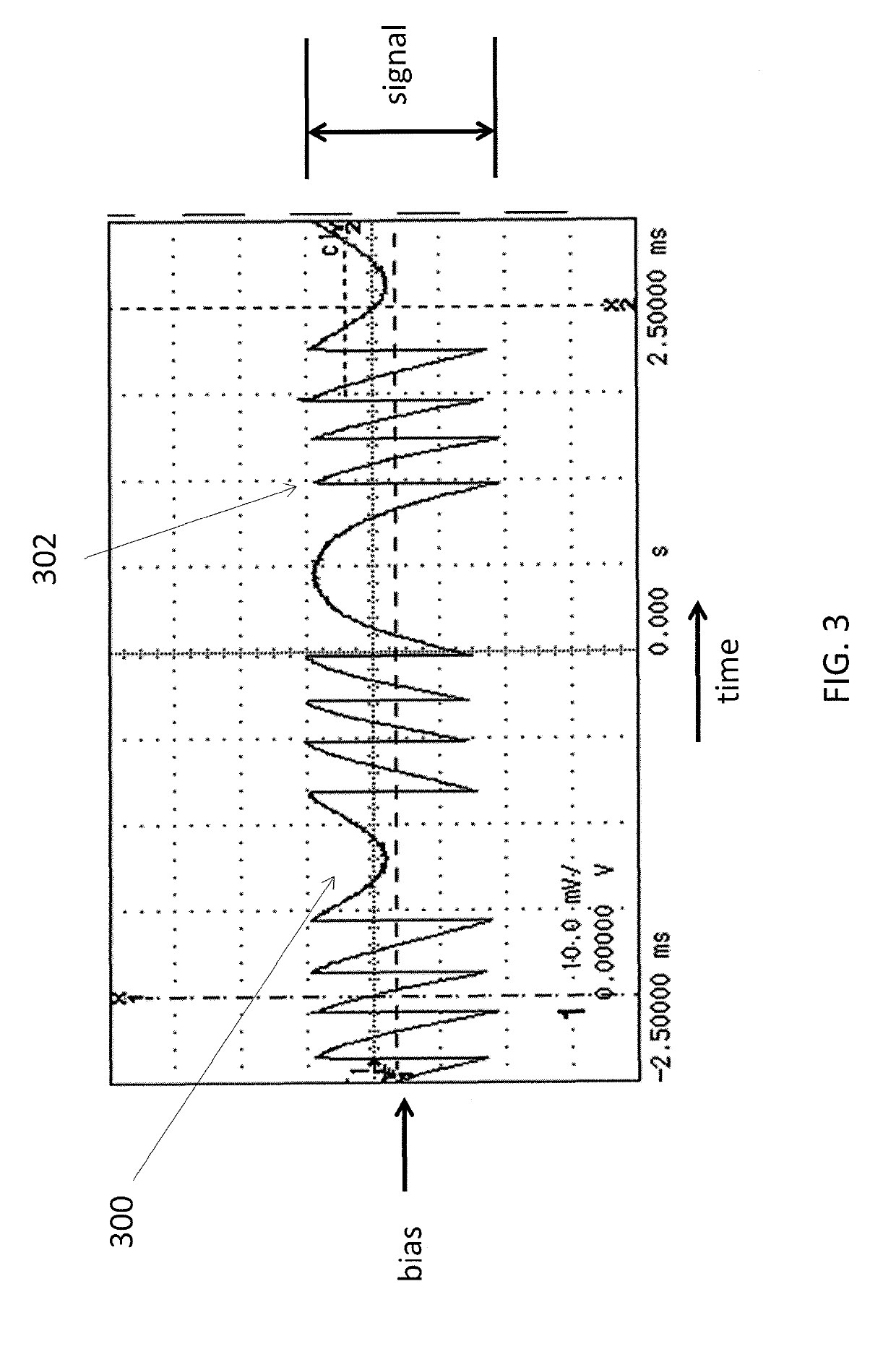Improved self-mix module utilizing filters
a filter and self-mixing technology, applied in the field of signal processing and to sensors, can solve the problems of low achievable signal level, insufficient degree of improvement for a number of interesting consumer applications, and many of the limitations of traditional lasers, so as to reduce increase the apparent peak-to-peak modulation of the signal, and reduce the effect of apparent peak-to-peak modulation
- Summary
- Abstract
- Description
- Claims
- Application Information
AI Technical Summary
Benefits of technology
Problems solved by technology
Method used
Image
Examples
Embodiment Construction
[0042]The present disclosure relates to processing of signals and to sensors based on the mechanism of laser self-mixing, as well as packaging for the sensor.
[0043]In the following detailed description, numerous specific details are set forth in order to provide a thorough understanding of some embodiments. However, it will be understood by persons of ordinary skill in the art that some embodiments may be practiced without these specific details. In other instances, well-known methods, procedures, components, units and / or circuits have not been described in detail so as not to obscure the discussion.
[0044]Functions, operations, components and / or features described herein with reference to one or more embodiments of the present disclosure, may be combined with, or may be utilized in combination with, one or more other functions, operations, components and / or features described herein with reference to one or more other embodiments of the present disclosure. The present disclosure may...
PUM
 Login to View More
Login to View More Abstract
Description
Claims
Application Information
 Login to View More
Login to View More - R&D
- Intellectual Property
- Life Sciences
- Materials
- Tech Scout
- Unparalleled Data Quality
- Higher Quality Content
- 60% Fewer Hallucinations
Browse by: Latest US Patents, China's latest patents, Technical Efficacy Thesaurus, Application Domain, Technology Topic, Popular Technical Reports.
© 2025 PatSnap. All rights reserved.Legal|Privacy policy|Modern Slavery Act Transparency Statement|Sitemap|About US| Contact US: help@patsnap.com



